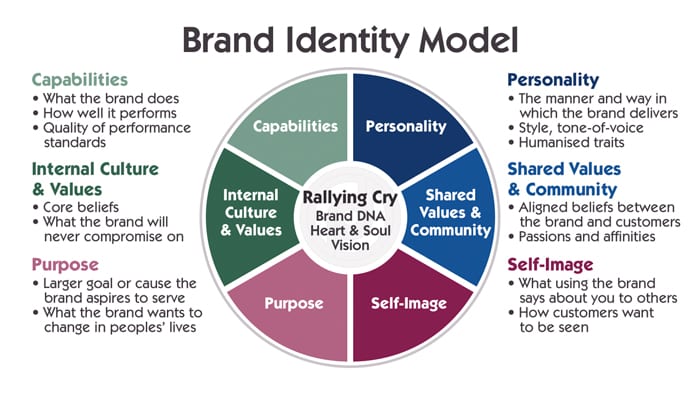Marketing a business may seem like a straight-forward process of creating content, running paid campaigns, and engaging with the audience. But, is this process enough to get sales and revenue? How can a marketer build a strong brand image that connects with the target audience and triggers a buying decision?
Potential customers convert into regular customers when they start experiencing an emotional relationship with a brand.
Around 60% of shoppers said they buy from brands they trust and 21% said they bought because they liked the brand.
Let’s face it, a marketer’s challenges are far more than they appear. Building a trustworthy brand is no piece of cake. It takes a strategic approach to create a distinct brand identity that stands out amidst the clutter.
There’s always a fine line between promoting a business, and building a customer-base – it’s essential to cross that line if you wish to fulfill the marketing objectives and experienced branding agencies like Ramotion handle this very well.
Are you struggling to create a focused brand personality the creates resonance among potential buyers? Here are five powerful brand image building strategies to create an impactful brand persona that fetches long-term conversions and revenue:
Define the Brand’s Core Values
Every business exists for a purpose that’s beyond making money and generating profits. A brand’s core value proposition is rooted in its larger goals. Simon Sinek explains how some of the most successful companies are able to communicate ‘Why they are doing what they are doing’.
A business might manufacture cars but its purpose may be much beyond that: to ‘create innovative technologies that provide sustainable, environment-friendly transport’ for instance.
A brand’s core values stem from its vision; it boils down to just a few emotional words.

The core values make a brand more human and relatable – it’s what differentiates it from its competitors. A brand-persona can be outdoorsy, adventurous, and sporty like Redbull or it may be inspiring, friendly, and enthusiastic like Nestle.
Purpose-oriented and value-driven businesses attract audiences and customers who relate to their goals, aspirations, and identity.
2. Be Consistent
My neighbors know me as somebody who’s honest and likable but if I steal something or break the law, my reputation goes down the drain in a matter of a few hours.
It’s the same with brands too, defining a brand’s core persona is just the tip of the iceberg, it’s essential for marketers to stand by it through consistent messaging.
It takes 5 to 7 impressions to produce an iota of brand awareness; brand recognition happens through repetition.
A brand’s emotional values should reflect in every communication: website, brand logo, email, blog posts, videos, images, social media, and paid campaigns.
Marketers need to create guidelines so that each message carries the brand’s tone and voice. A checklist helps marketing teams to use the right vocabulary, colors, graphics, and images.
Consistent messaging adds strength to the brand voice and makes the persona fresh in the minds of the target customers.
3. Take an Audience-Centric Approach
A marketer’s role is to empathize with the audience and keep tabs on their sentiments. Understanding the needs and preferences of potential and existing customers helps in delivering the right messages through the right channels.
An audience persona helps marketers to know about audience challenges, beliefs, and goals.
In the digital age of choice, audiences prefer brands who understand their choices.
91% of consumers are more likely to shop with brands that provide relevant offers and recommendations.
AI technologies help marketers to deep-dive into the audience’s likes and dislike to personalize their marketing efforts.
Marketers can track website sessions to understand the product and content preferences of potential customers, for instance. Another good strategy is to monitor brand mentions and analyze online conversations around your brand. A sentiment-analysis helps brands to know what works with the audience and take corrective action wherever required.
When you understand audiences and offer personalized experiences they feel good about the relationship and turn into loyal customers and brand evangelists.
4. Build Trust
According to PwC’s Consumer Insights Survey (2018), 14% of respondents put trust as their No. 1 reason for choosing a retailer.
It’s because of trust that consumers don’t think twice before buying from big brands such as Apple, Toyota, and Oracle, etc. Credibility is an essential pillar of a strong brand.
How can marketers work towards making their brand trustworthy?
a. Displaying Social Proof
Potential customers want to know about your existing customers and their experience of your products and services. Positive client reviews and testimonials work as living proof of the reliability of your offerings. Marketers must highlight such customer experiences in their communication across marketing channels.
b. Showcasing Media Coverage
Getting press coverage in authority publications and news sites through the best press release distribution services is another way to build a positive brand image among target customers. You can reach out to journalists in your niche and provide expert comments on current news and trends. Another way to get visibility in niche publications is to pitch and write guest stories.
c. Co-Branding
Collaborating with known brands is an innovative way to build on brand trust and showcase positive associations. It’s vital, however, to partner with brands who have similar values so you can maintain a consistent brand messaging and voice.
d. Creating Content
Authentic and original content wins the game for any brand. It’s hard to ignore the importance of educating and entertaining the audience with branded content that comes with a distinct style. Content creation builds trust and loyalty among potential customers. Intelligent marketers tell brand stories by showing the behind-the-scenes of the company – they expose the real-life struggles and the achievement of those running the business.
e. Managing Customer Experiences
The brand promise works on the premise of fulfilling customer expectations. Happy customers go out and there and spread the word and so do the unhappy ones. Delighting customers through quality service and brand experiences goes a long way in coming across as a reliable brand and earning referrals.
The hardest part of creating a rock-solid brand is to build trust among the targeted audience. It can be a grueling process but pays off well in terms of sales and revenue for the business.
5. Have the Right Channel Strategy
In today’s times, there are multiple online channels. Each marketing platform has its own features and audience. It’s essential to choose the right platform to solidify brand presence amidst those who matter.
A B2B business stands to benefit from focusing on a social platform like LinkedIn, for instance. On the other hand, Instagram works well for niches such as travel, food, and fashion, etc. Choosing a set of channels that suit your brand is vital to getting your voice heard.
Brand building is a cumulative process. A focused channel strategy helps marketers to achieve faster brand growth and get higher returns from promotional activities.
Over to You
Marketing leaders can’t simply automate a strategy and sit back. It’s futile to expect wonders from mediocre efforts. Conversions happen when marketing campaigns are is backed by consistent brand messages. Building a brand is a process of self-discovery for the leadership team. The process helps in creating a lasting brand-to-customer relationship which is necessary for recurring conversions and steady growth in revenues.
Advertising concept: Branding on digital background -DepositPhotos


